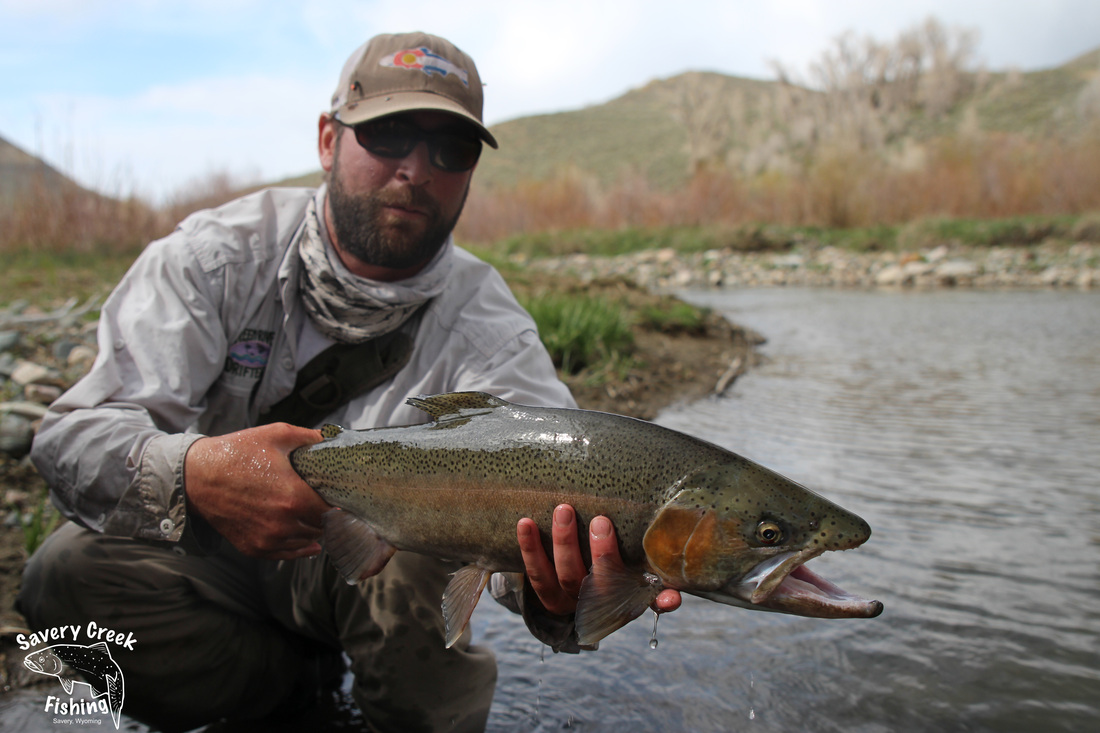The Stillwater Slaya
So.. despite how much I love tossing streamers, I really love fishing stillwater. My biggest fish have come from stillwaters and I just really enjoy fishing them. One thing I've discovered during my stillwater endeavors is that Callibaetis patterns that contain ostrich are stellar! Some of my best days on the stillwater can thank this bug and others like it. This Callibaetis pattern started with a bead and soft hackle, but like many other patterns it had to undergo a simplification process. I've found out that some days fishing a weightless pattern is just the ticket, and for some reason, the trout will ignore everything else. I don't have the slightest clue as to why, but I do know it works!
One of my favorite parts of this pattern is the slightly over-sized legs and the opal flashback. The over-sized legs really help this bug swim and act like rudders while finger crawling it back on a full-sink line, or even while doing long and steady strips. I did struggle with a dubbing for this pattern and after trying a bunch of different dubbings I have found my favorite to be a 50/50 mix of SLF Spiky Squirrel in Natural Fox and Peacock Ice Dub. As for the opal flashback... We all know opal calls in the fish like a carnitas burrito calls in da Cheech.
Next time you find yourself prepping your fly box for a stillwater adventure don't forget to tie some of these up!
~Brandon
One of my favorite parts of this pattern is the slightly over-sized legs and the opal flashback. The over-sized legs really help this bug swim and act like rudders while finger crawling it back on a full-sink line, or even while doing long and steady strips. I did struggle with a dubbing for this pattern and after trying a bunch of different dubbings I have found my favorite to be a 50/50 mix of SLF Spiky Squirrel in Natural Fox and Peacock Ice Dub. As for the opal flashback... We all know opal calls in the fish like a carnitas burrito calls in da Cheech.
Next time you find yourself prepping your fly box for a stillwater adventure don't forget to tie some of these up!
~Brandon
Material List
 Add to Cart Add to Cart |  View in store View in store |

Hook: Alec Jackson Phantom Covert Nymph Hook - 13


Thread: Danville Flat Waxed Nylon Thread - 70 Denier - Olive


Tail: Whiting Coq De Leon Rooster Cape - Medium Pardo


Legs: Coq De Leon Hen Saddle - Speckled Brown


Thorax Pt.1: SLF Spikey Squirrel Dubbing - Natural Fox


Thorax Pt.2: Ice Dub - Peacock


Rib: UTC Ultra Wire - Copper - Small


Flashback (wing case): Mirage Flashabou - 3005 - Opal


Wing Case: Montana Fly Company Skinny Skin - Mottled Brown


Wing Case Coat: Loon Fluorescing UV Clear Fly Finish


Abdomen: Ostrich Herl - Scud Tan


Other tools from the tutorial:
Loon UV Power Light   |
Thin Skin - Gator, Brown/Black   |
Mayfly Tails - Dark Dun   |
Rattle Bass Fangs Scissors   |
Dr. Slick All-In-One Dubbing Brush   |





















